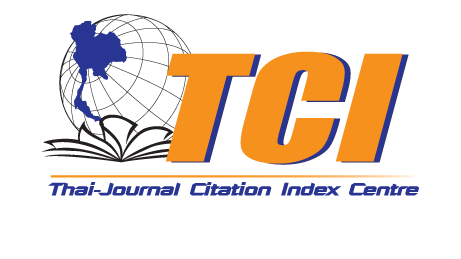Uncovering adaptive mechanisms to water defcit in low soil phosphorus tolerant common bean genotypes
Keywords:
Phaseolus vulgaris L., relative water content, specifc leaf area, net assimilation rate, UgandaAbstract
Water-deficit and low soil phosphorus are major constraints for common bean cultivation in sub-Saharan Africa. Tolerant varieties offer cost-effective alternatives to irrigation and fertilizers. This study examines how low phosphorus-tolerant common bean genotypes adapt to water-deficit through leaf morphology, physiology, and root development in screenhouse and field conditions. AFR703-1, AFR708, and K131 were completely randomized across well-watered and water-deficit conditions in screenhouse, with phosphorus applied at rates of 0, 6, and 16 mg P kg⁻¹ soil. In the field, same genotypes received triple superphosphate at rates of 0, 12, and 32 kg P ha⁻¹ in Mukono (well-watered) and Nakasongola (water-deficit) environments. AFR708 showed a significant (P < 0.001) 26% reduction in RWC under water-deficit without P, mitigated by higher P levels, while AFR703-1 and K131 showed no significant (p>0.05) difference under similar conditions. AFR703-1 and K131 exhibited significantly (P < 0.05) lower specific leaf area in water-deficit than well-watered conditions, contrasting with AFR708. Similarly, LMR in the studied genotypes significantly (P < 0.001) decreased with rising P under water-deficit, with diverse trends in well-watered conditions. AFR703-1 and K131 recorded higher NAR in water-deficit than well-watered conditions, contrary to AFR708. AFR genotypes significantly (P < 0.001) showed enhanced root development in water-deficit, including increased adventitious, tap, and lateral roots, higher total biomass, and finer root length compared to well-watered conditions, despite lower grain yields, notably in Nakasongola site. Over all, AFR703-1 holds promise as a breeding parent for enhancing water-deficit resilience and phosphorus tolerance in common bean production, despite yield reduction under stress.Top of Form
References
Balemi, T., & Negisho, K. (2012). Management of soil P and plant adaptation mechanisms to P stress for sustainable crop production: A review. Journal of Soil Sciences and Plant Nutrition, 12(4), 547–561. https://doi.org/10.4067/S0718-95162012005000015
Beebe, S. E., Rao, I. M., Blair, M. W., & Acosta-Gallegos, J. A. (2013). Phenotyping common beans for adaptation to drought. Frontiers in Physiology, 4, 35. https://doi.org/10.3389/fphys.2013.00035
Benson, T., Lubega, P., Bayite-Kasule, S., Mogues, T., & Nyachwo, J. (2012). The supply of inorganic fertilizers to smallholder farmers in Uganda: Evidence for Fertilizer Policy development. SSRN Electronic Journal. https://doi.org/10.2139/ssrn.2197980
Cavalieri, A. J., Merchant, A., & van Volkenburgh, E. (2011). Why not beans? Functional Plant Biology, 38(12), 3–6. https://doi.org/10.1071/FPv38n12_FO
Devi, M. J., Sinclair, T. R., Vadez, V., & Krishnamurthy, L. (2009). Peanut genotypic variation in transpiration efficiency and decreased transpiration during progressive soil drying. Field Crops Research, 114(2), 280–285. https://doi.org/10.1016/j.fcr.2009.08.012
Dey, A. K., Guha, P., Sharma, M., & Meshram, M. R. (2019). Comparison of different methods of in-situ leaf area measurement of betel leaf (Piper betle L.). International Journal of Recent Technology and Engineering, 7(6), 1512–1516. https://www.irte.org/portfolioitem/f2622037619/
Estefan, G., Sommer, R., & Ryan, J. (2013). Methods of Soil, Plant, and Water Analysis: A manual for the West Asia and North Africa region (3rd ed.). International Center for Agricultural Research in the Dry Areas (ICARDA).
Field, A. (2009). Discovering statistics using SPSS. SAGE Publications Inc.
GOU. (2004). Increasing incomes through exports: A plan for zonal agricultural production, agro-processing, and marketing for Uganda. MAAIF.
Hardin, J. W., & Hilbe, J. M. (2018). Generalized linear models and extensions (4th ed.). Stata Press.
Jin, J., Lauricella, D., Armstrong, R., Sale, P., & Tang, C. (2015). P application and elevated CO2 enhance drought tolerance in field pea grown in a P-deficient vertisol. Annals of Botany, 116(6), 975–985. https://doi.org/10.1093/aob/mcu209
Karimi, S., Yadollahi, A., Arzani, K., Imani, A., & Aghaalikhani, M. (2015). Gas-exchange response of almond genotypes to water stress. Photosynthetica, 53(1), 29–34. https://doi.org/10.1007/s11099-015-0070-0
Khan, R. H., Paull, G. J., Siddique, M. H. K., & Stoddard, F. L. (2010). Faba bean breeding for drought-afflicted environments: A physiological and agronomic perspective. Field Crops Research, 115(3), 279–286. https://doi.org/10.1016/j.fcr.2009.09.003
Kramer-Walter, K. R., Bellingham, P. J., Millar, T. R., Smissen, R. D., Richardson, S. J., & Laughlin, D. C. (2016). Root traits are multidimensional: Specific root length is independent from root tissue density and the plant economic spectrum. Journal of Ecology, 104(5), 1299–1310. https://doi.org/10.1111/1365-2745.12562
Lazali, M., & Drevon, J. J. (2021). Mechanisms and adaptation strategies of tolerance to P deficiency in legumes. Communications in Soil Science and Plant Analysis, 52(13), 1469–1483. https://doi.org/10.1080/00103624.2021.1885693
Lee, S., & Lee, D. K. (2018). What is the proper way to apply the multiple comparison test? Korean Journal of Anesthesiology, 71(5), 353–360. https://doi.org/10.4097/kja.d.18.00242
Liang, J., Xia, J., Liu, L., & Wan, S. (2013). Global patterns of the responses of leaf-level photosynthesis and respiration in terrestrial plants to experimental warming. Journal of Plant Ecology, 6(1), 1–18. https://doi.org/10.1093/jpe/rt003
Liu, C., Wang, Y., Pan, K., Jin, Y., Li, W., & Zhang, L. (2015). Effects of phosphorus application on photosynthetic carbon and nitrogen metabolism, water use efficiency and growth of dwarf bamboo (Fargesia rufa) subjected to water deficit. Plant Physiology and Biochemistry, 96, 20–28. https://doi.org/10.1016/j.plaphy.2015.07.018
Lunze, L., Kimani, M. P., Rachier, O. G., Ugen, M. M., Ruganza, V., & Awad Elkarim, E. E. (2007). Bean improvement for low soil fertility adaptation in Eastern and Central Africa. In A. Bationo, B. Waswa, J. Kihara, & J. Kimetu (Eds.), Advances in Integrated Soil Fertility Management in Sub-Saharan Africa: Challenges and Opportunities (pp. 541–548). Springer.
Mahmud, A. A., Rahman, M. M., Bazzaz, M. M., Banu, A. M., Mamun, A. A. M., & Rahama, S. M. H. (2016). Growth biomass distribution and yield of potato under water stress and non-stress conditions. Bangladesh Horticulture, 2(2), 81–93.
Mftumukiza, D., Barasa, B., Kiggundu, N., Nyarwaya, A., & Muzei, J. (2020). Smallholder farmers’ perceived evaluation of agricultural drought adaptation technologies used in Uganda: Constraints and opportunities. Journal of Arid Environments, 177, 104137. https://doi.org/10.1016/j.jaridenv.2020.104137
Namugwanya, M., Tenywa, J. S., Otabbong, E., Mubiru, D. N., & Masamba, T. A. (2014). Development of common bean (Phaseolus vulgaris L.) production under low soil phosphorus and drought in Sub-Saharan Africa: A review. Journal of Sustainable Development, 7(5), 128–142. https://doi.org/10.5539/jsd.v7n5p128
Namugwanya, M., Tenywa, J. S., & Otabbong, E. (2018). Response of common bean genotypes grown in soil with normal or limited moisture, with special reference to the nutrient phosphorus. Agronomy, 8(8), 132. https://doi.org/10.3390/agronomy8080132
Okoboi, G., & Barungi, M. (2012). Constraints to fertilizer use in Uganda: Insights from Uganda Census of Agriculture 2008/9. Journal of Sustainable Development, 5(10), 49–60. https://doi.org/10.5539/jsd.v5n10p49
Paz-Ares, J., Puga, M. I., Rojas-Triana, M., Martinez-Hevia, I., Diaz, S., Poza-Carrión, C., Miñambres, M., & Leyva, A. (2022). Plant adaptation to low P availability: Core signaling, crosstalks, and applied implications. Molecular Plant, 15(1), 104–124. https://doi.org/10.1016/j.molp.2021.12.005
Poorter, H., Niklas, J. K., Reich, P. B., Oleksyn, J., Poot, P., & Mommer, L. (2012). Biomass allocation to leaves, stems and roots: Meta-analyses of interspecific variation and environmental control. New Phytologist, 193(1), 30–50. https://doi.org/10.1111/j.1469-8137.2011.03952.x
Porch, T. G., Ramirez, H. V., Santana, D., & Harmsen, W. E. (2009). Evaluation of common bean for drought tolerance in Juana Diaz, Puerto Rico. Journal of Agronomy and Crop Science, 195(5), 328–334. https://doi.org/10.1111/j.1439-037X.2009.00375.x
Rosales, A. M., Ocampo, E., Rodríguez-Valentín, R., Olvera-Carrillo, Y., Acosta-Gallegos, J., & Covarrubias, A. A. (2012). Physiological analysis of common bean (Phaseolus vulgaris L.) cultivars uncovers characteristics related to terminal drought resistance. Plant Physiology and Biochemistry, 56, 24–34. https://doi.org/10.1016/j.plaphy.2012.04.007
Shibuya, T., Endo, R., Kitaya, Y., & Hayashi, S. (2016). Growth analysis and photosynthesis measurements of cucumber seedlings grown under light with different red to far-red ratios. HortScience, 51(7), 843–846. https://doi.org/10.21273/HORTSCI.51.7.843
Sibiko, K. W., Ayuya, O. I., Gido, E. O., & Mwangi, J. K. (2013). An analysis of economic efficiency in bean production: Evidence from Eastern Uganda. Journal of Economics and Sustainable Development, 4(13), 1–9.
Sivakumar, M. V. K., Motha, R. P., Wilhite, D. A., & Wood, A. D. (2011). Agricultural drought indices (WMO Expert Group Meeting on Agricultural Drought Indices). World Meteorological Organization.
Sulieman, S., & Tran, L. P. (2015). P homeostasis in legume nodules as an adaptive strategy to P deficiency. Plant Science, 239, 36–43. https://doi.org/10.1016/j.plantsci.2015.06.018
Soureshjani, H. K., Nezami, A., Kaf, M., & Tadayon, M. R. (2019). Responses of two common bean (Phaseolus vulgaris L.) genotypes to deficit irrigation. Agricultural Water Management, 213, 270–279. https://doi.org/10.1016/j.agwat.2018.09.038
Suriyagoda, L. D. B., Ryan, H. M., Renton, M., & Lambers, H. (2010). Multiple adaptive responses of Australian native perennial legumes with pasture potential to grow in P- and moisture-limited environments. Annals of Botany, 105(5), 755–767. https://doi.org/10.1093/aob/mcq040
Taulya, G., Van Asten, J. A., Leffelaar, P. A., Ken, E., & Giller, E. K. (2014). Phenological development of East African highland banana involves trade-offs between physiological age and chronological age. European Journal of Agronomy, 60, 41–53. https://doi.org/10.1016/j.eja.2014.07.006
Yan, Y., Liu, Q., Zhang, Q., Ding, Y., & Li, Y. (2019). Adaptation of dominant species to drought in the Inner Mongolia Grassland – Species Level and Functional Type Level Analysis. Frontiers in Plant Science, 10, 231. https://doi.org/10.3389/fpls.2019.00231
Downloads
Published
How to Cite
Issue
Section
License
Copyright (c) 2025 Food Agricultural Sciences and Technology

This work is licensed under a Creative Commons Attribution-NoDerivatives 4.0 International License.








